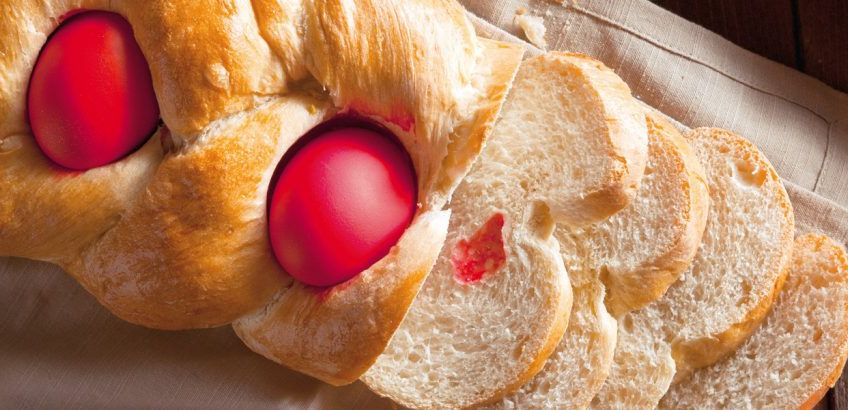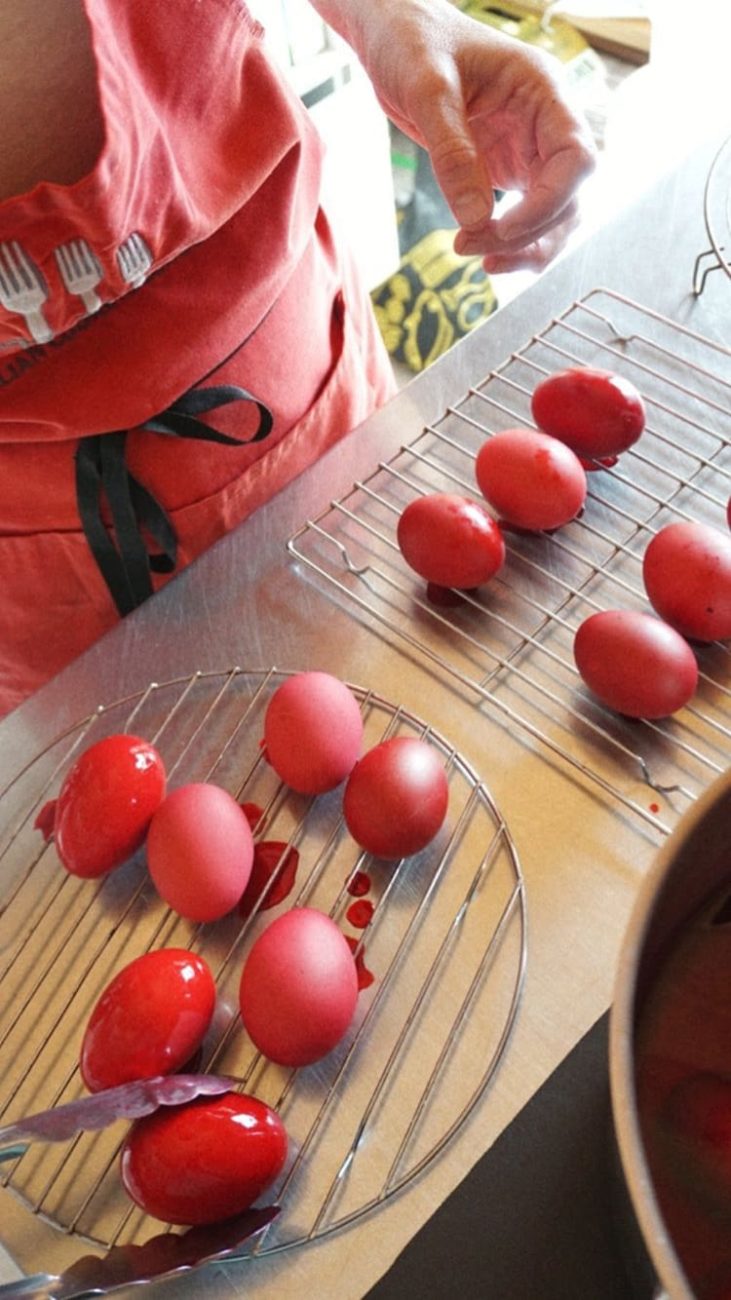
‘In the shadow of Milan’s imposing cathedral, beneath the Galleria Vittorio Emanuele in one of its many elegant restaurants, I enjoyed the most romantic dinner I’ve ever had, and a foretaste of all the adventures to come.’
This is how my book ‘The Fragrance of Basil – Food and Memories of my Italian Childhood’ mysteriously ends, after the description of my first date with my husband Paolo. The picture of our wedding announcement is the clue of the first of our adventures:
19 September 1993
Holy Monastery of SS. Cyprian & Justina – Athens, Greece.
Yes, we got married in Greece, but it was far from a typical Greek wedding with hundreds of guests. Actually, there were no guests at all.

Of that magical day, I remember three things: The sound of my racing heart, the colour of the sky at sunrise and the sweet taste of the bread after the wedding ceremony. The taste of the bread was unlike any other taste I ever experienced. A mix of aniseed and marzipan, butter and citrus. When I ask what kind of bread it was, I’m told it’s Tsoureki, the Greek variation of the Easter celebratory breads which belong to the Christian tradition; ‘Panettone’ in northern Italy being the most famous.

At Easter, Tsoureki is shaped into three braids with three red dyed eggs to symbolize Christ’s resurrection. But Tsoureki is also prepared in Greece throughout the year as a delicious coffee companion. Its unique rich flavour is due to two aromatic spices used in this traditional tsoureki recipe, mastic and mahlab, which give a really characteristic flavour and smell.
Mastic, known as ‘the tears of Chios’, is a natural resin of an evergreen bush related to the pistachios plant, for which the island of Chios is famous. It’s taste is a combination of fennel, aniseed and vanilla, which can be used if mastic is unavailable. Mahlab, or mahlepi, is the seed of a wild cherry found along the coast of the Mediterranean sea. It’s taste is strongly linked to that of marzipan and it is essential for the Tsoureki.
We make this bread almost every Easter with my three daughters (when they’re in the country that is!). I found Mahlepi in the Greek shop called ‘Taste Greece’ in Browns Bay, Auckland.

Raffaela’s Greek wedding Tsoureki Recipe
- 80g butter (room temperature)
- 100ml cream
- 80g sugar
- 3 medium eggs, at room temperature (150g)
- 450g bread flour
- 10g of fresh compressed yeast (1 and ½ tsp of dry yeast)
- Zest of 1 lemon, grated
- ½ tsp of ground mastic (or ½ tsp fennel, ½ tsp aniseed and ½ tsp natural vanilla essence)
- 1tsp ground mahleb (or 1 teaspoon almond essence, but it is not the same!)
- 1 egg and 1 tbsp water, for glazing
Method:
Melt the butter with the sugar in a saucepan, on very low heat. Do not allow it to boil. Remove from the heat and add the cream. Allow to cool down for a few minutes then add the yeast and stir until dissolved.
Pour into a large bowl and whisk in the whole eggs, one at the time.
Add the flour, the ground mastic and mahlepi, grated lemon rind and stir the ingredients to combine. Then, tip onto a floured surface and knead for few minutes. The dough remains quite soft, but not sticky.
Cover the dough with a reusable beeswax wrap (we don’t like plastic, remember!) and allow it to rise at room temperature for about 2-3 hours, or until it doubles in size.
Gently deflate the dough with your hands and cut into 3 equal portions. Take one piece and roll it a little bit with your hands. Hold it with your hands from the edges and shake to stretch the dough into a rope. Form the other two ropes than braid them together and transfer the bread onto a large baking tray.
Allow it to rise for about 1 more hour at room temperature, until it almost doubles in size.
In a small bowl add the egg yolk and 1 tbsp water and whisk with a fork. Brush the top of the bread with the egg, being careful not to deflate it.
Optional: Boil three eggs and dye them red (we bought our natural red dye from a Russian shop, Marusya, in Albany – Auckland). Once boiled, gently press each egg into the bread.
Bake in preheated oven at 180C for about 30-40 minutes, until nicely coloured.
If you make this at home, i’d love to hear how you went. Take some photo’s and send them through, or tag my Instragram so I can see them!
